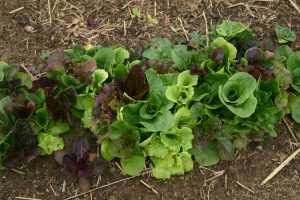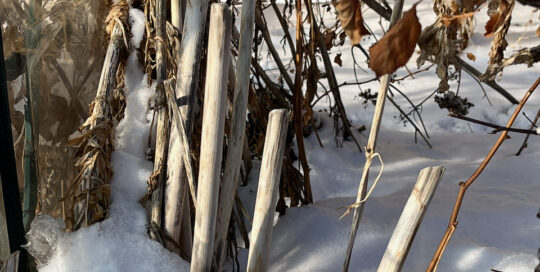Planting When It’s Dry
Views: 3262

I can’t believe I’m saying this, but I kind of hope it’s going to snow. We need the moisture. Even after a whole lot of the nasty white this winter, we are already dry. I’ve been working on cleaning up the beds. I try to keep as much mulch on them as I go, but any dirt not covered in leaves or other mulch dries out in short order.
This reality is making me veer off topic a little bit this week. Instead of talking about which pests are invading your garden, I’d like to offer a few tips on gardening in regions that aren’t blessed with generous rains. Growing up in Ohio, we didn’t have to do much watering. We might water newly planted seedlings, but other than that, it really wasn’t something on the normal schedule.
When I moved out here, I quickly learned I was in a different world. We often have to start watering in April, depending on what we set out.
Dried Out Seed Beds
When I plant spinach in the next week, I’ll have to make sure I give it a regular drink or it won’t germinate well.
One thing I often do with larger seeds like spinach, is to spread a layer of straw over the top to help retain the moisture. Sometimes it works well, sometimes it blows away; it all depends on which garden bed I’m using. If it’s in a windy spot, I can pin the floating row cover over the top for the same effect. It prevents the wind from drying out the seed bed quite as quickly.
I’m pretty big on mulch around here, and I’ll use almost whatever I can get my hands on that will do the job. In the fall, the leaves from our neighbor’s cottonwood blow into the front beds. That’s just dandy in my book. I clean some of them out in the spring, but truly I try to leave as many as I can. I really noticed the difference in the soil this year. The “dirt” (because that’s what it is) in these beds has always been poor. Now it is loaded with worms. I was tickled.
Other Alternatives
I have many, many bales of straw that friends gave me this winter. Those I’ll break apart in flakes and use them as pathways; plus, I’ll probably mulch quite a few of the bigger plants with a generous layer. And when the grass needs cut, I will try to do as much as I can with the push mower because I can use the clippings (we don’t use any fertilizer or herbicides on the lawn) around plants.
The new mulch I’m going to try this year is pea gravel. I spoke with a horticulturist at the Denver Botanic Gardens a few weeks ago, and he sang the praises of their pea gravel mulch to keep the plants from scorching. I’m going to haul some over, and at least give it a try in one of the perennial beds up front. I won’t use landscape fabric underneath (I hate that stuff), and we’ll see how the plants handle it.
These are just a couple of things we have to do to conserve as much water as we can around here. It’s a challenge to keep things growing well when there isn’t much moisture in the soil, and we don’t receive decent rain for months. But with these techniques – and a few more I probably will talk about later – there are ways to make a go of it.
Meet Amy Grisak
Amy is a freelance author and photographer in Great Falls, MT who specializes in gardening, foods, and sustainable agriculture. She provides information on every kind…
Amy's Recent Posts

This Little Piggy is a Problem: Dealing with Feral Hogs








